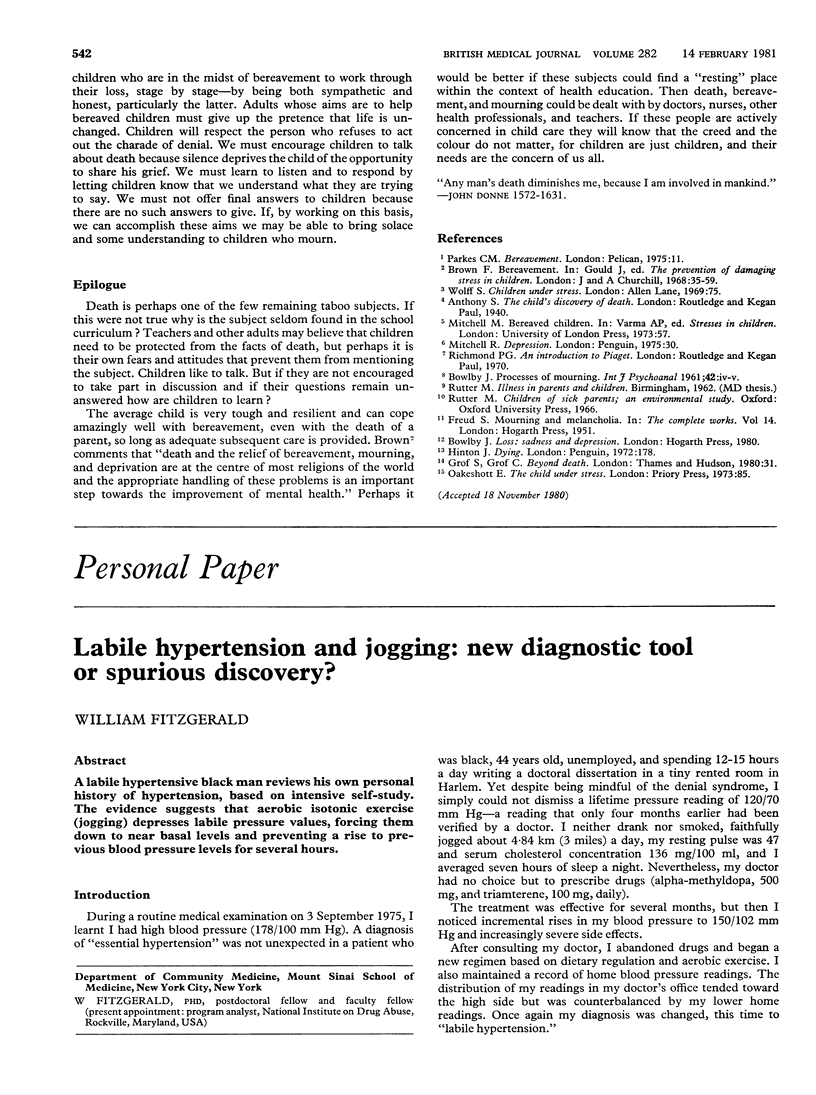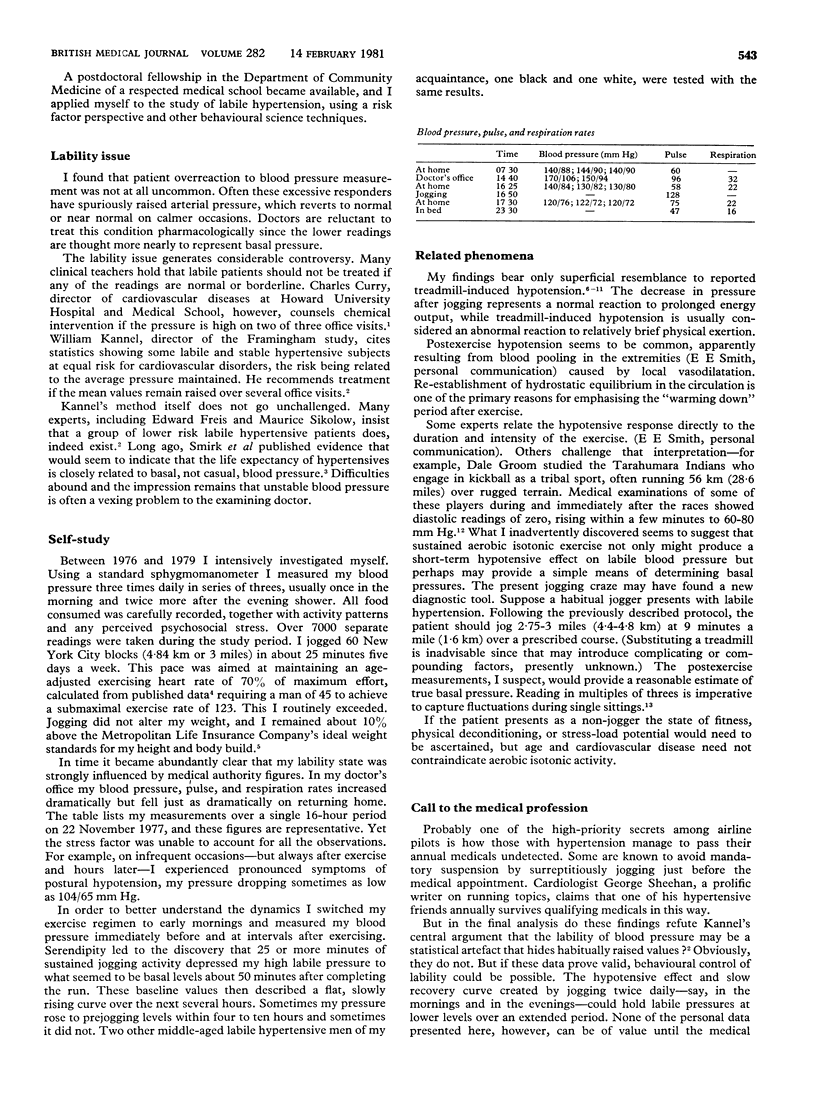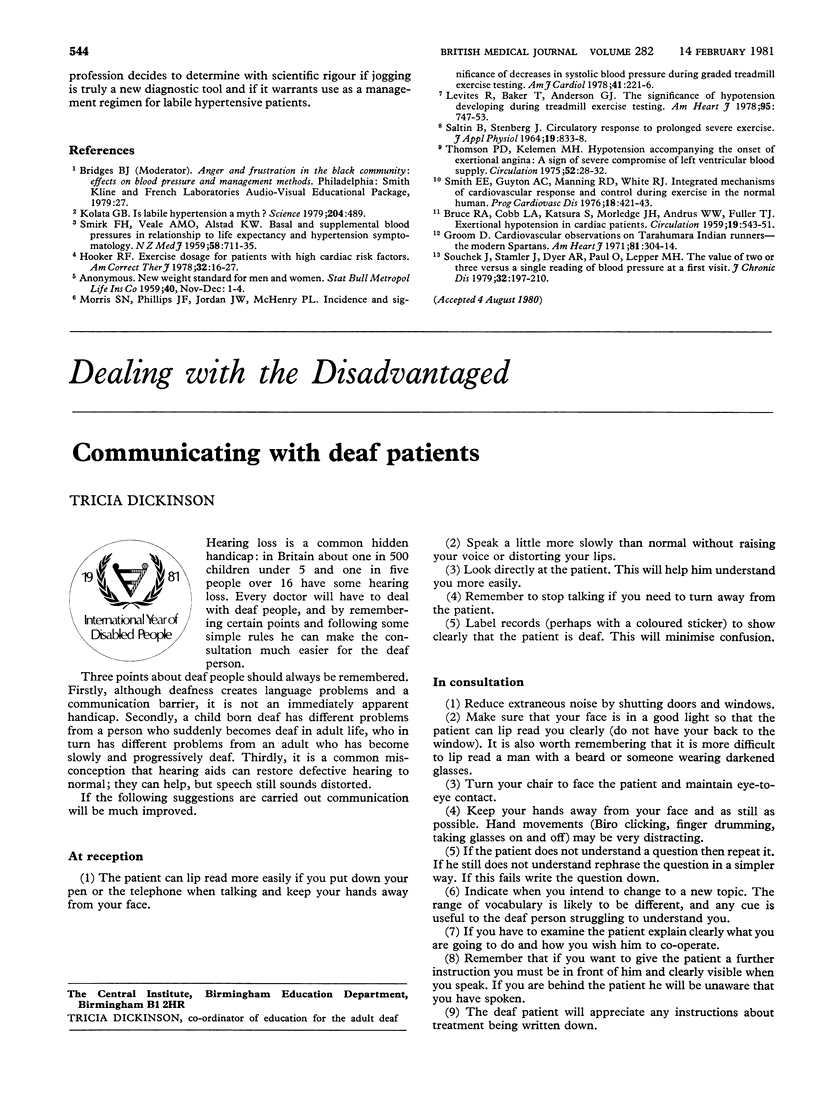Abstract
A labile hypertensive black man reviews his own personal history of hypertension, based on intensive self-study. The evidence suggests that aerobic isotonic exercise (jogging) depresses labile pressure values, forcing them down to near basal levels and preventing a rise to previous blood pressure levels for several hours.
Full text
PDF


Selected References
These references are in PubMed. This may not be the complete list of references from this article.
- BRUCE R. A., COBB L. A., KATSURA S., MORLEDGE J. H., ANDRUS W. W., FULLER T. J. Exertional hypotension in cardiac patients. Circulation. 1959 Apr;19(4):543–551. doi: 10.1161/01.cir.19.4.543. [DOI] [PubMed] [Google Scholar]
- Groom D. Cardiovascular observations on Tarahumara Indian runners--the modern Spartans. Am Heart J. 1971 Mar;81(3):304–314. doi: 10.1016/0002-8703(71)90099-8. [DOI] [PubMed] [Google Scholar]
- Hooker R. F. Exercise dosage for patients with high cardiac risk factors. Am Correct Ther J. 1978 Jan-Feb;32(1):16–27. [PubMed] [Google Scholar]
- Kolata G. B. Is labile hypertension a myth. Science. 1979 May 4;204(4392):489–489. doi: 10.1126/science.432652. [DOI] [PubMed] [Google Scholar]
- Levites R., Baker T., Anderson G. J. The significance of hypotension developing during treadmill exercise testing. Am Heart J. 1978 Jun;95(6):747–753. doi: 10.1016/0002-8703(78)90505-7. [DOI] [PubMed] [Google Scholar]
- Morris S. N., Phillips J. F., Jordan J. W., McHenry P. L. Incidence and significance of decreases in systolic blood pressure during graded treadmill exercise testing. Am J Cardiol. 1978 Feb;41(2):221–226. doi: 10.1016/0002-9149(78)90160-1. [DOI] [PubMed] [Google Scholar]
- SALTIN B., STENBERG J. CIRCULATORY RESPONSE TO PROLONGED SEVERE EXERCISE. J Appl Physiol. 1964 Sep;19:833–838. doi: 10.1152/jappl.1964.19.5.833. [DOI] [PubMed] [Google Scholar]
- SMIRK F. H., VEALE A. M., ALSTAD K. S. Basal and supplemental blood pressures in relationship to life expectancy and hypertension symptomatology. N Z Med J. 1959 Dec;58:711–735. [PubMed] [Google Scholar]
- Smith E. E., Guyton A. C., Manning R. D., White R. J. Integrated mechanisms of cardiovascular response and control during exercise in the normal human. Prog Cardiovasc Dis. 1976 May-Jun;18(6):421–444. doi: 10.1016/0033-0620(76)90010-4. [DOI] [PubMed] [Google Scholar]
- Souchek J., Stamler J., Dyer A. R., Paul O., Lepper M. H. The value of two or three versus a single reading of blood pressure at a first visit. J Chronic Dis. 1979;32(3):197–210. doi: 10.1016/0021-9681(79)90065-1. [DOI] [PubMed] [Google Scholar]
- Thomson P. D., Kelemen M. H. Hypotension accompanying the onset of exertional angina. A sign of severe compromise of left ventricular blood supply. Circulation. 1975 Jul;52(1):28–32. doi: 10.1161/01.cir.52.1.28. [DOI] [PubMed] [Google Scholar]


